Coverage for Faulty Workmanship Found In South Dakota
October 11, 2017 —
Tred R. Eyerly - Insurance Law HawaiiThe South Dakota Supreme Court found coverage in favor of the general contractor who was sued for alleged faulty workmanship. Owners Ins. Co. v. Tibke Constr., Inc., 2017 S.D. LEXIS 106 (S.D. Aug. 23, 2017).
The homeowners hired Tibke Construction Inc. as general contractor to build a new house. Tibke hired Jerry's Excavating Inc. as a subcontractor to prepare the soil and perform excavation work. After the project was completed, the homeowners sued Tibke and Jerry's Excavating for negligent construction and breach of contract. The homeowners alleged that Jerry's Excavating failed to conduct soil-compaction testing before construction. They alleged that the home was built upon highly expansive soils, resulting in damage to the home by "excessive settlement, cracking, structural unsoundness and other damages." The complaint further alleged that damages existed only on portions of the home not worked on by Jerry's Excavating.
Read the court decisionRead the full story...Reprinted courtesy of
Tred R. Eyerly, Insurance Law HawaiiMr. Eyerly may be contacted at
te@hawaiilawyer.com
When Do Hard-Nosed Negotiations Become Coercion? Or, When Should You Feel Unlucky?
October 21, 2019 —
Stan Millan, Jones Walker, LLP - ConsensusDocsConflict in a negotiation is to be expected and is arguably healthy for the process. Owners and contractors are constantly engaged in negotiations; whether it be negotiating changes to the work, changes to the schedule, or changes to the contractual terms. But at what point does taking a strong position in a negotiation cross the line and become coercion or bad faith?
A recent decision from the Armed Services Board of Contract Appeals touched on this very issue. While this is a government contract case, the issues discussed in this case (namely negotiating a change) are routinely encountered in just about every construction project. This decision is instructive because it adds to a trending line of cases that limit an owner’s and contractor’s negotiation tactics.
On August 5, 2019, the board issued an opinion in the appeal of Sand Point Services, LLC vs. NASA, ASBCA Nos. 6189. In Sand Point Services, the contractor was hired by the owner to repair the Wallops Flight Facility’s aircraft parking apron. During its work, the contractor hit a differing site condition, namely unsuitable soils. The contractor sought additional time and money for this differing site condition. The owner ultimately responded with a show cause letter to the contractor claiming, among other breaches, that the contractor was significantly behind schedule. This was generally viewed by all parties as the start of default proceedings against the contractor.
Read the court decisionRead the full story...Reprinted courtesy of
Stan Millan, Jones Walker, LLPMr. Millan may be contacted at
smillan@joneswalker.com
Construction Litigation Roundup: “I Never Had a Chance”
May 29, 2023 —
Daniel Lund III - Lexology“I never had a chance.”
Such was the plea of a general contractor to a Maryland federal court after having been terminated for failure to perform.
“The Agreement provides no express right to cure,” found the court, weighing in on the contractor’s wrongful termination claim. Indeed, the contract was also very clear on termination, allowing for termination for cause on numerous bases, including a common catchall: if the contractor “persistently fails to perform the provisions of this Agreement.”
In advance of the actual date of termination, the owner wrote to the contractor, in accordance with the contract: “Notice is also given that seven days from the date of this correspondence, [owner] will exercise its [termination] rights under Section 13.2.2.2 of the Contract." The communication from the owner contained no discussion of allowing the contractor an opportunity to cure its alleged default.
Read the court decisionRead the full story...Reprinted courtesy of
Daniel Lund III, PhelpsMr. Lund may be contacted at
daniel.lund@phelps.com
Using Lien and Bond Claims to Secure Project Payments
March 01, 2021 —
Jonathan Cheatham - Construction ExecutiveWhile suing in court for payment on a construction project is nothing new, the very notion of non-payment tends evokes images of hard-working contractors and subcontractors, working with tight margins, owed payment for services rendered and materials. Fortunately, for general contractors and subcontractors in the construction industry, there are better remedies for securing payment on a project before it becomes a bigger issue.
Construction projects, especially large public ones, usually include a dizzying array of general contractors, subcontractors and independent contractors, sometimes numbering more than a hundred entities. The inter-connected groups of companies working toward the goal of project completion require competent construction management in order to stay on time and on budget for completion. One of the project owner’s key tools used to ensure the process runs smoothly is the use of payment bonds and surety bonds.
Payment Bonds
Payment bonds ensure that contractors and subcontractors get paid for work performed in accordance with contract conditions. Disputes can occur before, during and even after the completion of work. Injunctive lawsuits, which contemplate the stoppage of work, would be detrimental to completing a public or private construction project of substantial size. Rather than having such minor disputes derail the entire project, the aggrieved party’s remedy is to file a claim against the payment bond, which offers a solution designed to keep the issue separate from the project’s completion. The payment bond also allows the project owner to transfer risk.
Reprinted courtesy of
Jonathan Cheatham, Construction Executive, a publication of Associated Builders and Contractors. All rights reserved.
Read the court decisionRead the full story...Reprinted courtesy of
NEHRP Recommendations Likely To Improve Seismic Design
November 09, 2020 —
Nadine M. Post - Engineering News-RecordCode-based earthquake engineering is on the verge of getting simpler, thanks to the National Earthquake Hazards Reduction Program’s recommendation to replace the traditional seismic hazard maps with an improved seismic hazards database. The recommendation is one of the most significant changes put forth in the 2020 update of the NEHRP seismic design provisions, which are the foundation for the prescriptive seismic design code for buildings and other structures.
Reprinted courtesy of
Nadine M. Post, Engineering News-Record
Ms. Post may be contacted at postn@enr.com
Read the full story... Read the court decisionRead the full story...Reprinted courtesy of
Statutory Time Limits for Construction Defects in Massachusetts
November 27, 2013 —
CDJ STAFFConstruction defect claims are governed by a section of the Massachusetts laws and allow for three years after the work was completed, unless the defect is “inherently unknowable,” according to a post by John Shaffer on the web site of his firm, Marcus, Errico, Emmer & Brooks, a New England law firm that specializes in condominium law. Those “inherently unknowable” defects fall into the six-year statute of repose.
If, for example, a roof doesn’t show “significant water leakage” until after the end of the statutory period, “the association is out of luck and the responsible parties are off the hook,” writes Mr. Shaffer. “Even if the association could prove conclusively that the roof was improperly constructed and caused significant damage, the association’s claim will be barred.”
One problem condominium associations can face is that defects in the earliest phases of building can sometimes become apparent while the developer still controls the board. “While a developer in control of a board has the same fiduciary obligation as owner-elected trustees to protect the association’s interests, it is probably safe to assume that few developers will be inclined to sue themselves.” Here, Mr. Shaffer notes that owners can join together and either “hasten the transition to owner control of the association” or “convince them to correct the identified deficiencies.”
Mr. Shaffer notes that some questions concerning the statute of repose haven’t been answered by the Massachusetts courts. He does assure readers that “developers will no doubt argue that the statute of limitations has expired on defects because the association discovered or ‘should have discovered’ their existence more than three years before the lawsuit was started.” He advises condominium associations to calculate “their filing deadlines as conservatively as possible.”
Read the court decisionRead the full story...Reprinted courtesy of
Autovol’s Affordable Housing Project with Robotic Automation
February 15, 2021 —
Aarni Heiskanen - AEC BusinessJust over two years since breaking ground, Autovol is now using automation in new ways as it nears completion of its first major affordable housing project. The project, Virginia Street Studios, will make high-quality apartment homes more affordable to seniors in San Jose, one of America’s 10 most expensive cities.
The 400,000 square foot Autovol factory has now successfully deployed its unique combination of construction trades and robotic automation. Autovol has hired more than 100 employees, which the company calls Solutioneers. Led by CEO Rick Murdock and co-developed by The Pacific Companies, Autovol is pioneering a new kind of modular construction.
Robotics lead into the future of housing
“Automation and robotics will lead the world into the future of housing,” Murdock said. “What we’re doing hasn’t been attempted before. Our investors and Solutioneers leaned in with lots of confidence, and now we’re seeing great results that prove they were right.”
Read the court decisionRead the full story...Reprinted courtesy of
Aarni Heiskanen, AEC BusinessMr. Heiskanen may be contacted at
aec-business@aepartners.fi
20 Years of BHA at West Coast Casualty's CD Seminar: Chronicling BHA's Innovative Exhibits
May 03, 2018 —
Beverley BevenFlorez-CDJ STAFFThe Bert L. Howe & Associates, Inc., (BHA) exhibit has been a fixture at West Coast Casualty's Construction Defect Seminar since the mid-1990's. Through the years, BHA has updated their display, but no matter what year, you could count on the BHA exhibit to provide a not-to-be-missed experience.
2008-BHA's sleek, rear projection display includes a screen that promotes the firm's capabilities that can be seen throughout the exhibit hall. This would be one of many innovations BHA has brought to the West Coast Casualty seminar.
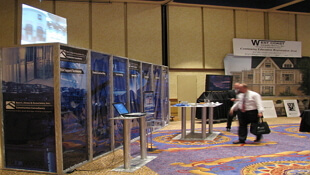
2009-With the success of the rear screen projection, BHA adds additional monitors to provide attendees with more information about BHA.
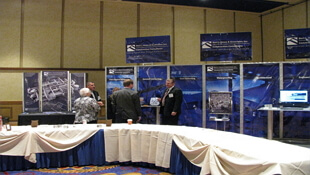
2010-BHA adds an interpretive professional development exhibit targeted to Building Envelope issues allowing adjusters and other non-construction professionals hands on access to the systems and components at the heart of many related such claims.


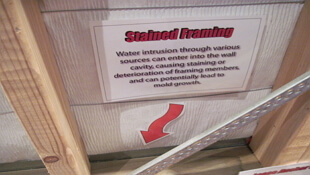
2011-BHA's Swing for Charity challenge is born.

2012-Always innovating, BHA expands its rear projection and professional development offerings to West Coast attendees.

2013-BHA showcases additional capabilities with a twenty-four foot, custom, convex, immersive video experience.

2014-BHA adds an iPhone display to give a hands-on demonstration of their data collection methods.
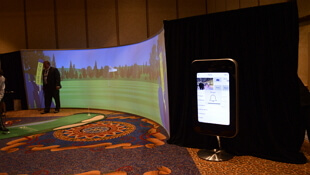
2015-BHA's twenty-four foot , custom, convex, immersive video experience was elevated with two additional rear projection screens, reflecting BHA's newest capabilities and services.

2016-BHA dazzles attendees with their new exhibit comprised of more than 15 integrated, high definition, LCD displays. iPads are stationed on tables to conveniently demonstrate BHA's data collection processes.
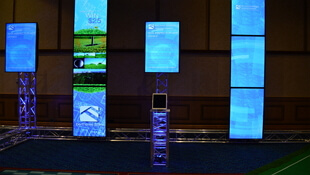
2017-BHA's Swing for Charity Golf Challenge raised $2,225.00 for the National Coalition for Homeless Veterans and $1,900 for Final Salute.
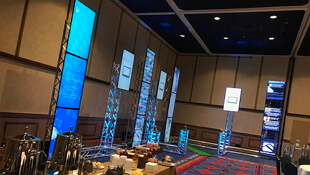
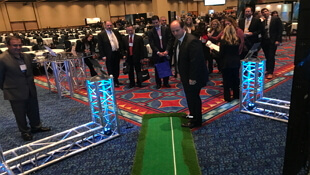
Read the court decisionRead the full story...Reprinted courtesy of




































































